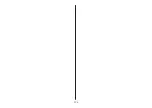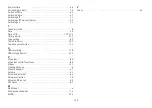
147
Picture profile
Eco: Compromise for all applications.
Sports: Setting for sports channels or sports programs.
Television: Setting for animated films, DVD players and Blue Ray
players.
Games: Preferred setting for recordings from game consoles.
PC Monitor: Preferred setting for recordings from a connected PC.
User: Your self-configured picture profile.
Code
The settings for parental control are secured with a four-digit
numerical code, which you can set. Make a note of the code number
entered. If you have forgotten the code number, consult your
specialist dealer.
DHCP
The
D
ynamic
H
ost
C
onfiguration
P
rotocol permits assignment of the
network configuration to clients by a server.
A client is a computer program that establishes contact with another
computer program on a server, in order to make use of its services.
DHCP enables computers to be connected automatically to an
existing network, without the need for any manual configuration.
The client must simply be configured to retrieve an IP address auto-
matically. When a computer connected to the network is started, it
can automatically retrieve an IP address, the subnet mask, the default
gateway and also DNS server and, if in use, WINS server details from a
DHCP server.
36 Glossary
ARC (audio return channel)
An audio return channel has been implemented in the HDMI 1.4
version to reduce the cabling effort between various HDMI
components.
The audio return channel is always useful if a TV set integrated in a
home cinema system has a built-in digital tuner, DVD or Blu-ray
player or another source of digital-/sound material.
The ARC function can establish an “audio return channel” via the
HDMI cable to the AV device. In other words, the same cable that
is normally responsible for transporting data from the AV device to
the TV set in this case transfers audio data in the opposite direction.
The audio return channel makes the audio cable (Toslink) previously
required in addition to the HDMI cable superfluous.
The audio return channel supports all formats, which can also be
transmitted via conventional TV SPDIF connection - among others,
these are Dolby Digital, DTS and PCM audio. However, formats that
cannot be transmitted via S/PDIF, e.g. all HD audio formats, are not
supported by the audio return channel.
Motion compensation
“Motion compensation, film” improves the picture display for black
and white or cinema films. Motion becomes smoother and a more
three-dimensional picture appearance results.
Vertical picture position
In the case of some wide screen films subtitles are broadcast in the
lower black strip. To ensure these subtitles remain visible when
enlarged, you can move the picture upwards.














































